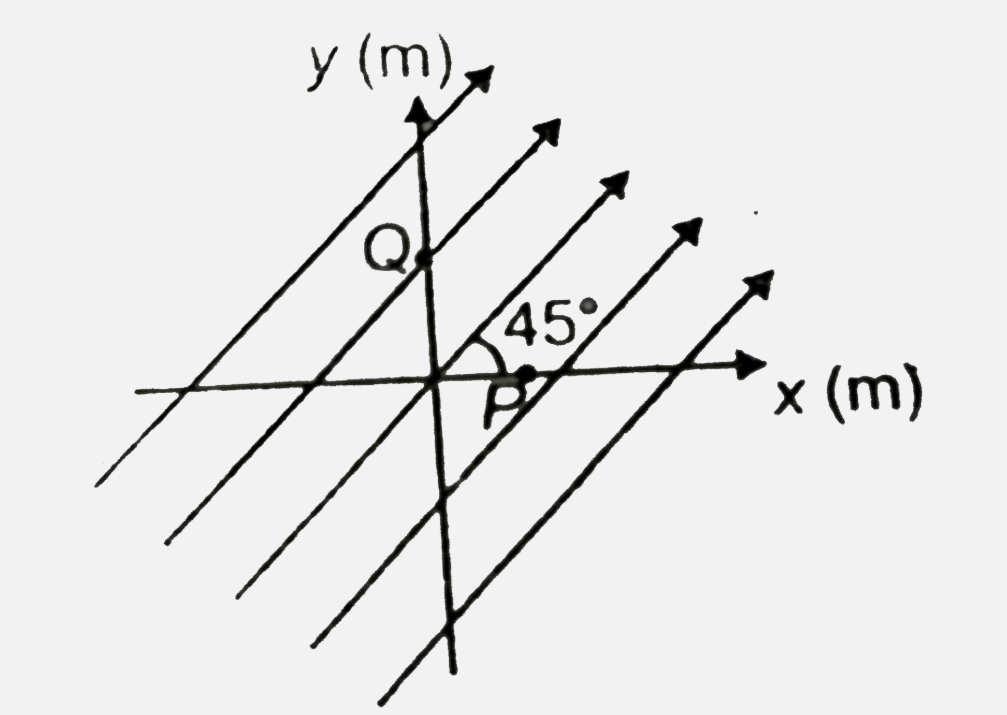In a uniform electric field, the potential is 10 V at the origin of coordinates and 8V at each of the points (1,0,0), (0,0,1) and (0,0,1). Then potential at the point (1,1,1) will be
0
4 V
8 V
10 V
The correct Answer is:B
Topper's Solved these Questions
- ELECTROSTATICSBOOK - AAKASH SERIESCHAPTER - ELECTROSTATICSEXERCISE - ADDITIONAL PRACTICE EXERCISE (LEVEL -II LECTURE SHEET (ADVANCED) MORE THAN ONE CORRECT ANSWER TYPE QUESTIONS)
5 Videos
- ELECTROSTATICSBOOK - AAKASH SERIESCHAPTER - ELECTROSTATICSEXERCISE - ADDITIONAL PRACTICE EXERCISE (LEVEL -II LECTURE SHEET (ADVANCED) LINKED COMPREHENSION TYPE QUESTIONS)
2 Videos
- ELECTROSTATICSBOOK - AAKASH SERIESCHAPTER - ELECTROSTATICSEXERCISE - ADDITIONAL PRACTICE EXERCISE (LEVEL - I (MAIN) (STRAIGHT OBJECTIVE TYPE QUESTIONS)
24 Videos
- ELECTROMAGNETICSBOOK - AAKASH SERIESCHAPTER - ELECTROMAGNETICSEXERCISE - ADDITIONAL EXERCISE
6 Videos
- ELEMENTS OF VECTORSBOOK - AAKASH SERIESCHAPTER - ELEMENTS OF VECTORSEXERCISE - QUESTIONS FOR DESCRIPTIVE ANSWERS
9 Videos
Similar Questions
In a uniform electric field, the potential is 10V at the origin of coordinates , and 8V at each of the points (1, 0, 0), (0, 1, 0) and (0, 0, 1). The potential at the point (1, 1,1 ) will be .
View SolutionFour identical charges are placed at the points (1,0,0),(0,1,0),(−1,0,0), and (0,−1,0). Then,
View Solution
Knowledge Check
In a uniform electric fieled, the potential is 10V at the origin of coordinates , and 8V at each of the points (1, 0, 0), (0, 1, 0) and (0, 0, 1). The potential at the point (1, 1,1 ) will be .
A0B4VCvD10VFour identical charges are placed at the points (1,0,0),(0,1,0),(−1,0,0), and (0,−1,0). Then,
Athe potential at the origin is zeroBthe electric field at the origin is not zero.Cthe potential at all points on the z - axis, other than the origin, is zeroDthe field at all points on the z - axis, other than the origin acts along the z - axis.A uniform electric field E0 exists in a region at angle 45∘ with the x - axis. There are twom point A(a,0)andB(0,b) having potential VAandVB, respectively, then
 .Aa<bBa>bCa>bDa=b
.Aa<bBa>bCa>bDa=b
A uniform electric field E0 exists in a region at angle 45∘ with the x - axis. There are two point A(a,0)andB(0,b) having potential VAandVB, respectively, then
 .
.
View SolutionLet V0 be the potential at the origin in an electric field →E=4ˆi+5ˆj. The potential at the point (x,y) is
View SolutionA uniform electric field of 200 V / m is directed at 45∘ with x -axis as shown in figure. The co-ordinates of point P and point Q are (1,0) and ( 0,2) . Find the potential difference , VP−VQ ( in volts) .

View SolutionA uniform electric field of 200 V / m is directed at 45∘ with x -axis as shown in figure. The co-ordinates of point P and point Q are (1,0) and ( 0,2) . Find the potential difference , VP−VQ ( in volts) .

View SolutionLet V0 be the potential at the origin in an electric field →E=4ˆi+5ˆj. The potential at the point (x,y) is
View Solution
